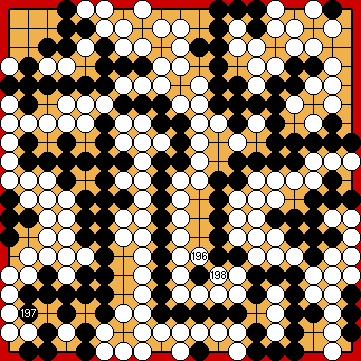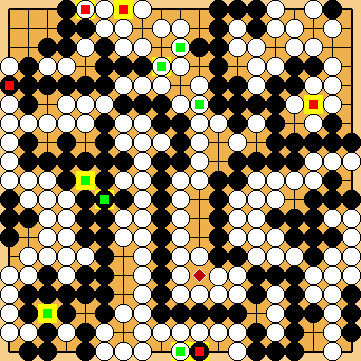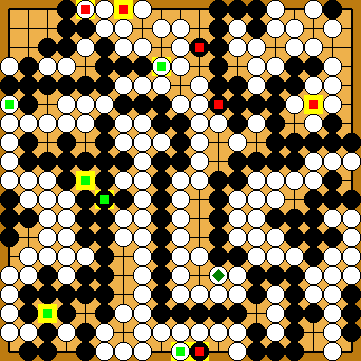Variations of Our Solution (IIIa)
No Early Kikashi
VAR  (.1)
(.1)  (.4)
(.4) 
|
(Referenced by
|
|
We now know that this atari cannot be counted as an additional ko threat. We ask for your kind understanding that we did not adjust this and the next three diagrams.
Alternatively, she could have captured Black's just played stone with a move at |
|
|
|
|
|
Black's throw-in (discovered late by Joachim) in the upper right loses one tempo in the Main Semeai. In response to my guzumi (
Please note that Black could have left this final exchange of ko threats unplayed; it does not affect the final scores. |
|
However, we still have to compensate for our earlier mistake above, counting White's atari in the upper left centre as an additional ko threat.
|
|
|
|
Black must not play any reduction. |
|
Capture Variation: Compared to the superordinate variation ...
In total, gains and losses compensate for each other. White + 1 => White + 1 |
|
Semeai Variation: Compared to the superordinate variation ...
In total, White lost two points. White + 1 => Black + 1 |
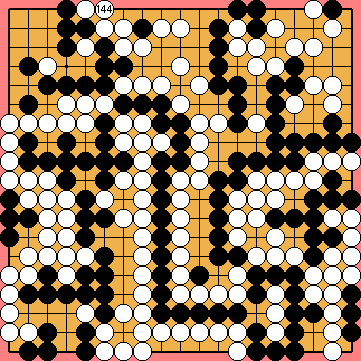
 648ep
648ep 648cx
648cx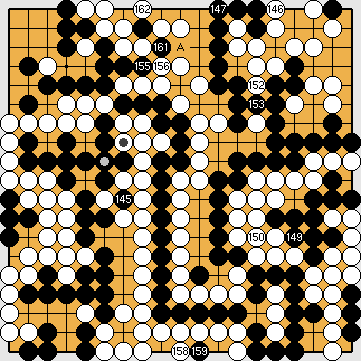
 ;
;  ;
;  ;
;  ;
;  ;
; 
 :
: ;
;  :
: ,
,  in the centre, which had been played too early by us.
in the centre, which had been played too early by us.
 : (A
: (A  648ex
648ex , without affecting the final scores of the game.
, without affecting the final scores of the game.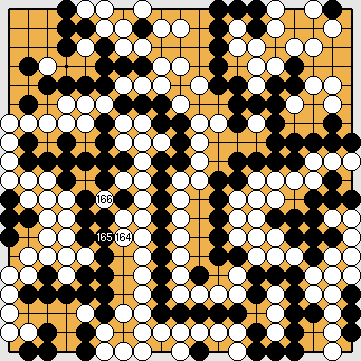
 :
: :
: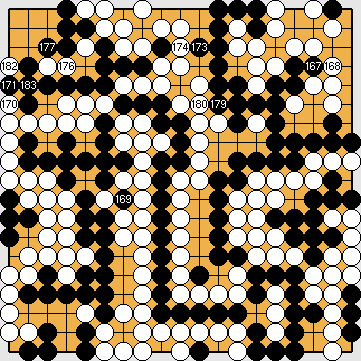
 ;
;  ;
;  ;
;  ;
; 
 ;
;  ;
;  ;
;  :
: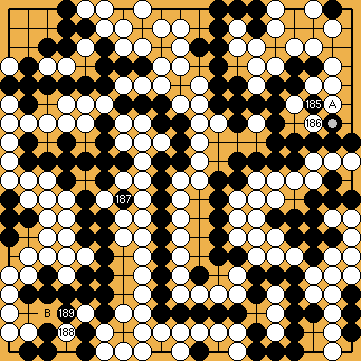

 : (A
: (A 
 (instead of our "usual" move of
(instead of our "usual" move of  :
: is mandatory for Black to secure independent life in the corner, after White won the ko in the centre. Here, White provided Black with an additional prisoner.
is mandatory for Black to secure independent life in the corner, after White won the ko in the centre. Here, White provided Black with an additional prisoner. after White kikashi
after White kikashi  ,
,  there.
there.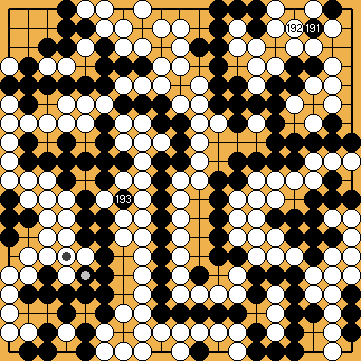
 ;
;  :
: :
: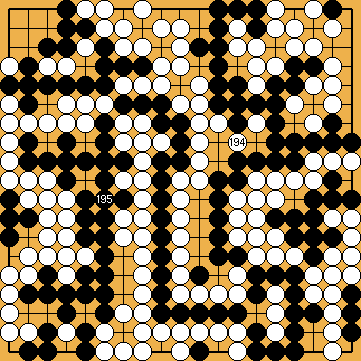
 :
: :
: